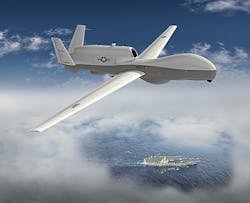AVIONICS INTELLIGENCE BLOG, Aug. 2013. The aerospace industry is a varied and multi-leveled beast. The military has always had a vested interest in maintaining the edge when it comes to innovations in avionics. Of course, there’s always crossover between certain sectors.
For example, engineers recently developed an intelligence, surveillance, and reconnaissance (ISR) platform originally designed for military use, with the intention of utilising it for civilian law enforcement agencies. It’s not uncommon for declassified technology to make the step from military to commercial.
USA for UAS
Further to law enforcement platforms being developed, news has shown that the commercial aviation industry is also taking a vested interest in technology originally developed for defence purposes.
In the US, the Aerospace Industries Association is in talks regarding the bridging of Unmanned Aircraft Systems (UAS) from purely military to commercial use. This would represent a significant leap forward in the ability of commercial industries to monitor the US for a variety of reasons (security, traffic, etc).
But will this put a strain on an already overburdened airspace? Increased levels of UAS craft might weaken strained air traffic control infrastructures.
Also, the news that spending for commercial UAS technology will reach an annual level of almost $11.5 billion is certainly a concern when it comes to maintaining successful deployment. That’s almost $90 billion dollars over the following decade.
Already begun
Of course, this spending is not without benefits. The advantages presented by allowing use of military aviation technology on a civilian level are clearly evident.
At the time of writing, federal regulators in the US have licensed the use of two classes of unmanned aircraft for commercial use. The UAS are Scan Eagle X200 from Insitu and PUMA from AeroVironment. These are intended to be used to support response crews in oil spill incidents and wildlife surveillance.
A far cry from purely law enforcement usage of such craft and an indication at how fast military technology can be adapted for civilian use. And this is only the beginning. Surveying for agriculture or even safer observations of weather patterns such as tornados are just a few more uses for the UAS.
Military aviation has always gone hand-in-hand with commercial, which is why it’s certainly not surprising to see UAS technology at the forefront of the avionic evolution.
This is a post written by Halit Bozdogan on behalf of Air Charter Service, which specialises in charting commercial aircraft to locations worldwide.



